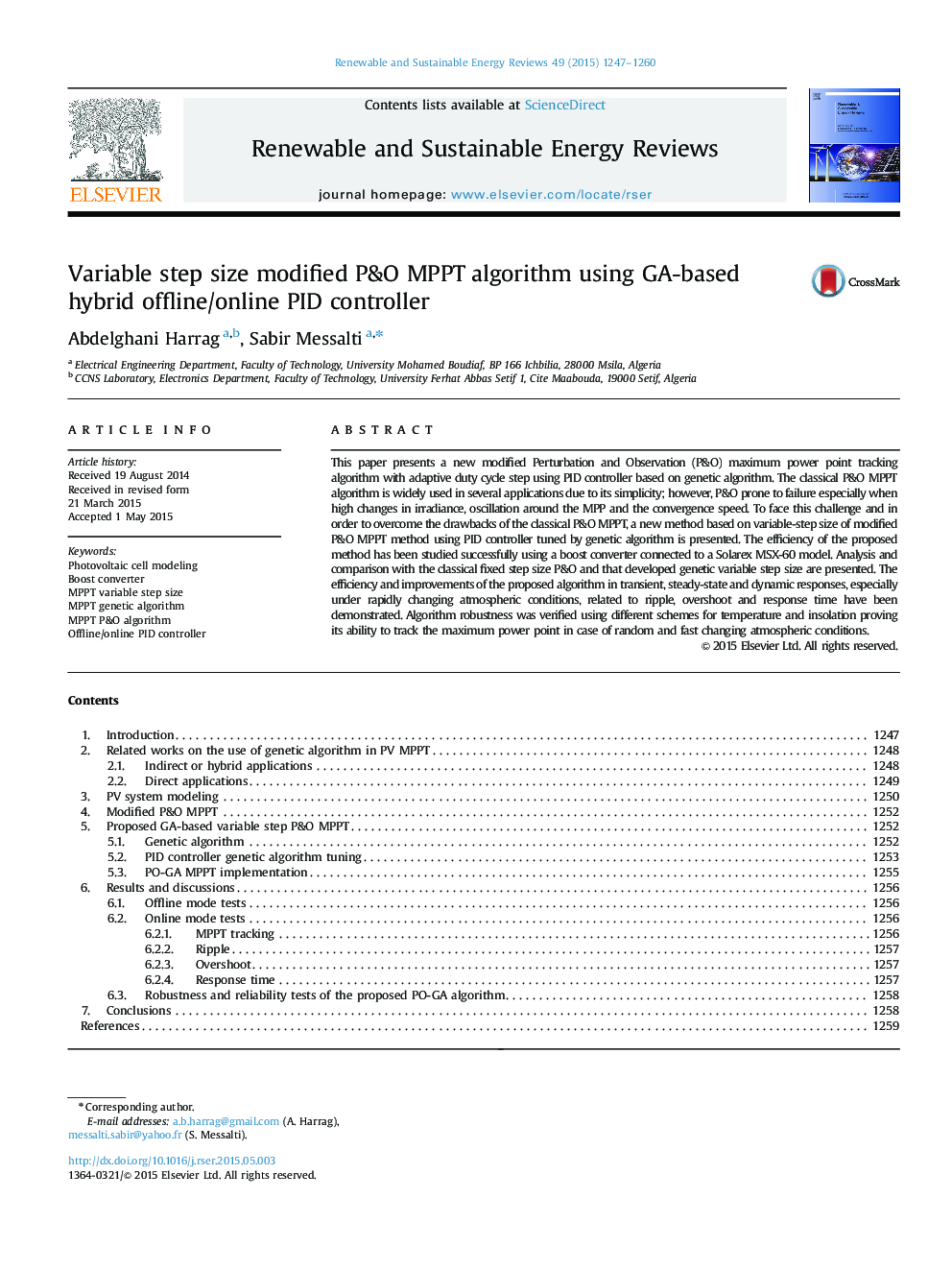| Article ID | Journal | Published Year | Pages | File Type |
|---|---|---|---|---|
| 8116989 | Renewable and Sustainable Energy Reviews | 2015 | 14 Pages |
Abstract
This paper presents a new modified Perturbation and Observation (P&O) maximum power point tracking algorithm with adaptive duty cycle step using PID controller based on genetic algorithm. The classical P&O MPPT algorithm is widely used in several applications due to its simplicity; however, P&O prone to failure especially when high changes in irradiance, oscillation around the MPP and the convergence speed. To face this challenge and in order to overcome the drawbacks of the classical P&O MPPT, a new method based on variable-step size of modified P&O MPPT method using PID controller tuned by genetic algorithm is presented. The efficiency of the proposed method has been studied successfully using a boost converter connected to a Solarex MSX-60 model. Analysis and comparison with the classical fixed step size P&O and that developed genetic variable step size are presented. The efficiency and improvements of the proposed algorithm in transient, steady-state and dynamic responses, especially under rapidly changing atmospheric conditions, related to ripple, overshoot and response time have been demonstrated. Algorithm robustness was verified using different schemes for temperature and insolation proving its ability to track the maximum power point in case of random and fast changing atmospheric conditions.
Keywords
Related Topics
Physical Sciences and Engineering
Energy
Renewable Energy, Sustainability and the Environment
Authors
Abdelghani Harrag, Sabir Messalti,
